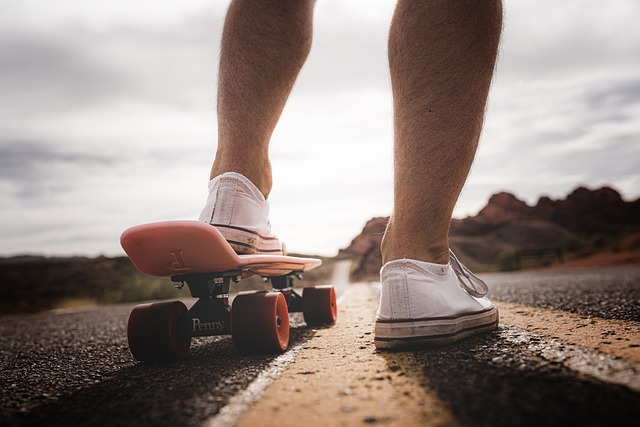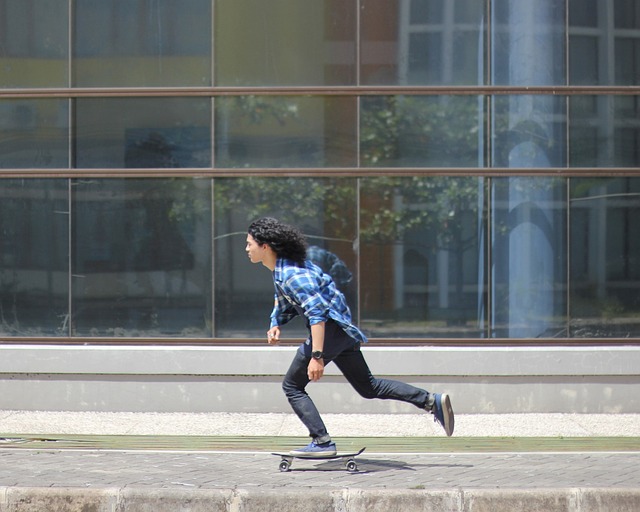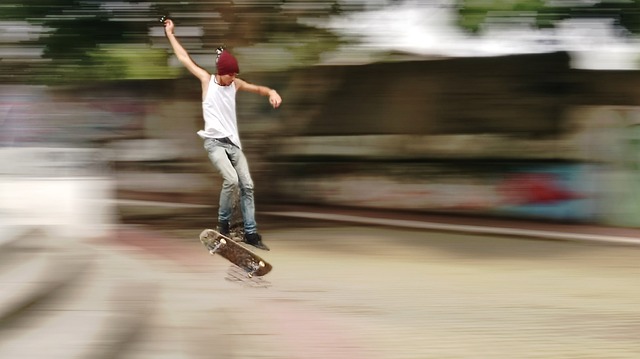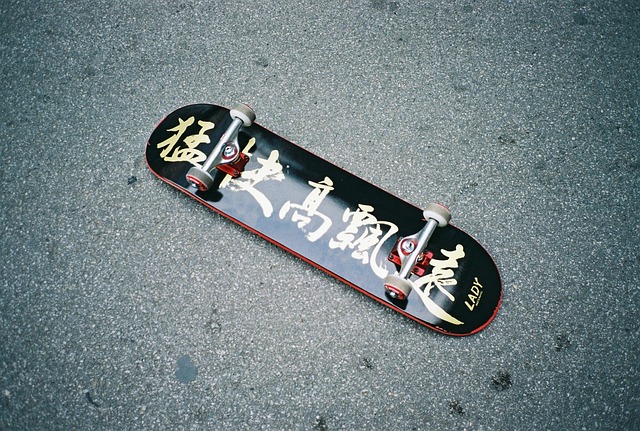Choosing the best skateboard for tricks involves selecting a durable deck (7-8 inches wide) with reinforced trucks and wheels. Smaller boards are ideal for tight spaces and technical tricks, while larger ones suit speed and advanced stunts. Consider wheel size (58-80mm) and durometer for agility or stability. Deck material like 7-ply maple or aluminum impacts flexibility and responsiveness. Select truck type and angle based on your skating style: smaller, lighter trucks for street tricks or larger, more upright angles for stability during high-speed stunts.
Unleash your inner skateboarder and elevate your tricks with the perfect board! This guide reveals the secrets to choosing the ultimate ride for stunts and tricks. From deck shape to wheel selection, we break down the factors that make a board ideal for agility and control. Learn about various materials, truck types, and safety gear to ensure you’re ready for ollies, kickflips, and beyond. Discover top tips for beginners and advanced skaters alike, and get inspired to conquer the streets with confidence.
Choosing the Right Board: Factors for Tricks and Stunts

When selecting a skateboard for tricks and stunts, several key factors come into play. The best skateboards for these activities are typically characterized by their durability and robust construction to withstand intense pressure and frequent impacts. Look for boards with reinforced trucks and wheels that offer excellent grip and stability, enabling you to perform complex maneuvers with precision and control.
Additionally, the shape and size of the skateboard play a significant role. Smaller boards generally provide better maneuverability, making them ideal for technical tricks in tight spaces. Larger boards, on the other hand, offer more stability at higher speeds, which is beneficial for advanced stunts like ollies and flips. Consider your skill level and the types of tricks you intend to perform when choosing a board that aligns with your needs and preferences.
– Deck shape and size

When choosing a skateboard for tricks and stunts, the deck shape and size play a significant role. The best skateboards for these activities often feature smaller decks, typically ranging from 7 to 8 inches in width, which offer enhanced maneuverability and agility. This compact design allows for tighter turns and more controlled movements, essential for pulling off complex tricks and stunts in limited spaces.
Additionally, the shape of the deck matters. Double-kick decks, with both ends upturned, provide versatility, enabling ollies and flips. Concave decks, with a dip in the center, offer better control and pop, crucial for powerful tricks and smooth landings. The right combination of size and shape ensures that you can navigate obstacles and perform with precision, making your skating experience more enjoyable and successful.
– Wheel size and durometer

When choosing the best skateboards for tricks and stunts, one key component to consider is the wheel size and durometer. Larger wheels, typically ranging from 70mm to 80mm in diameter, offer smoother rolls and better stability, ideal for cruising and performing more complex maneuvers. On the other hand, smaller wheels, around 58mm to 65mm, provide increased agility and responsiveness, making them perfect for tight spaces and pulling off high-speed tricks.
The durometer, measured on a Shore scale, indicates the hardness of the skateboard wheels. Harder wheels (lower durometer number) are more durable and maintain their shape better over time, but they offer less grip and absorb fewer impacts. Softer wheels (higher durometer number) provide better traction for quicker turns and easier ollies, but they wear down faster under heavy use. Choosing the right combination of wheel size and durometer depends on your preferred skating style and the type of terrain you’ll be navigating.
– Truck type and angle

When choosing a truck for tricks and stunts on your best skateboards, consider both the type and angle.
Different trucks offer unique riding characteristics, with varying levels of turnability, stability, and pop—essential factors for pulling off advanced maneuvers. For example, smaller, lighter trucks typically provide increased agility and maneuverability, making them ideal for street skating and technical tricks. Conversely, larger trucks offer better stability at high speeds, perfect for vert ramp stunts and ollies.
The angle of the truck, or its kingpin setup, also significantly impacts ride quality. A more upright angle provides a smoother turn and better control, while a more aggressive, laid-back angle allows for deeper carves and enhanced pop when performing flips and grinds.
Deck Material and Flexibility

When choosing the best skateboards for tricks and stunts, deck material and flexibility play a crucial role. The deck is the heart of your skateboard, and its composition significantly impacts performance and control. High-quality decks are typically made from seven-ply maple, known for its strength and durability, while offering a responsive and flexible surface ideal for executing complex tricks.
Flexibility is another key attribute to consider. A slightly flexible deck absorbs impact and provides a smoother ride, making it easier to perform tricks like flips and grinds. Stiffer decks, on the other hand, offer better stability at high speeds but may be less forgiving during intricate maneuvers. Finding the right balance between flexibility and stiffness ensures your board performs optimally in various skating scenarios, catering to both beginners looking to learn new tricks and seasoned skaters tackling advanced stunts.
– Pros and cons of different deck materials (e.g., 7-ply maple, aluminum)

When choosing the best skateboard for tricks and stunts, selecting the right deck material is key. 7-ply maple is a popular choice due to its classic feel, excellent pop, and ability to withstand high-impact maneuvers. It offers a smooth ride and is versatile for various styles, making it ideal for beginners and intermediate riders. However, maple decks may dent or chip with heavy use and require more maintenance than other materials.
Aluminum decks, on the other hand, are lighter weight, offering improved maneuverability and easier carving. They are highly durable and resistant to dents and cracks, making them a top choice for aggressive skaters who frequently land hard tricks. However, aluminum can be stiffer than maple, potentially reducing the board’s responsiveness. Additionally, it may not provide the same level of comfort for long-term use.
